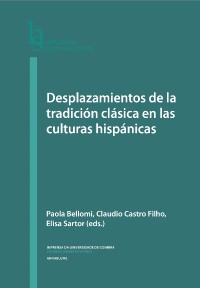Please use this identifier to cite or link to this item:
https://hdl.handle.net/10316.2/90518| Title: | El mito de Transilvania en la España de Carlos II: imagen, identidad y conflicto en las noticias impresas durante la Guerra Austroturca | Other Titles: | The myth of Transylvania during the reign of Charles II of Spain: image, identity and conflict in the news printed during the Great Turkish War | Authors: | Gómez Sánchez-Ferrer, Guillermo | Keywords: | news pamphlets;Transylvania;Great Turkish War;fictionalisation;relaciones de sucesos;Transilvania;guerra austro-turca;ficcionalización | Issue Date: | 2018 | Publisher: | Imprensa da Universidade de Coimbra | Journal: | http://hdl.handle.net/10316.2/44002 | Abstract: | This paper ventures into the Great Turkish War, which took place between
1683 and 1690, a subject historically well known, but rarely studied according to the
way the military events were narrated to the Spanish readers. Therefore, in this work,
I will offer the bigger picture of this “war of the printed newspapers”. I will approach,
as well, the image of the Transylvanian land created for a Spanish-speaker reader. It is
characterised by a mythical halo that can be considered the reflection of an armed and
cultural conflict that took place between Eastern and Western Europe. The physical
and literary analysis of those printed documents will allow us to identify how the
literary image of the Romanian regions was created for Spain. Finally, I expect to be able to fulfill one of the objectives of the project Oltenia in the 15th-19th Centuries, in
which this paper may be included: to initiate an international and interdisciplinary
debate about how the Romanian space is perceived in Spain in the Modern Age. El presente trabajo se adentra en un tema históricamente bien conocido, la guerra austro-turca sostenida entre 1683 y 1690, pero poco analizado en función del relato que se hizo de los acontecimientos bélicos para los lectores de España. Por ello, ofrecemos aquí una panorámica de esa “guerra de papeles” impresos. En ella atendemos a la imagen creada para el lector hispanohablante de las tierras de Transilvania, presentadas con un marcado carácter mítico que es reflejo del conflicto armado y cultural que tuvo lugar entre la parte oriental y la occidental de Europa. El análisis de dichos impresos, tanto en sus características formales como en su contenido, permite constatar que el relato del conflicto ayudó a crear una imagen literaria de las regiones rumanas en España. Con ello, finalmente, atenderemos a uno de los objetivos del proyecto Oltenia en los siglos XV-XIX, en el que se enmarca nuestro trabajo: entablar un debate internacional e interdisciplinario sobre la manera en la que el espacio rumano es percibido en España en la Edad Moderna. |
URI: | https://hdl.handle.net/10316.2/90518 | ISBN: | 978-989-26-1549-3 978-989-26-1550-9 (PDF) |
DOI: | 10.14195/978-989-26-1550-9_12 | Rights: | open access |
| Appears in Collections: | Desplazamientos de la tradición clásica en las culturas hispánicas |
Files in This Item:
| File | Description | Size | Format | |
|---|---|---|---|---|
| el_mito_de_transilvania.pdf | 231.96 kB | Adobe PDF |  |
Items in DSpace are protected by copyright, with all rights reserved, unless otherwise indicated.
